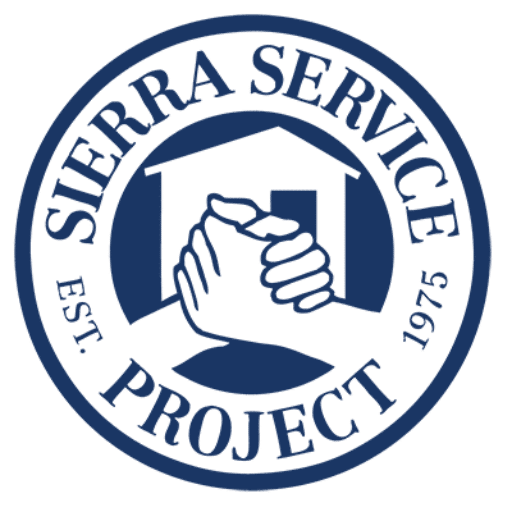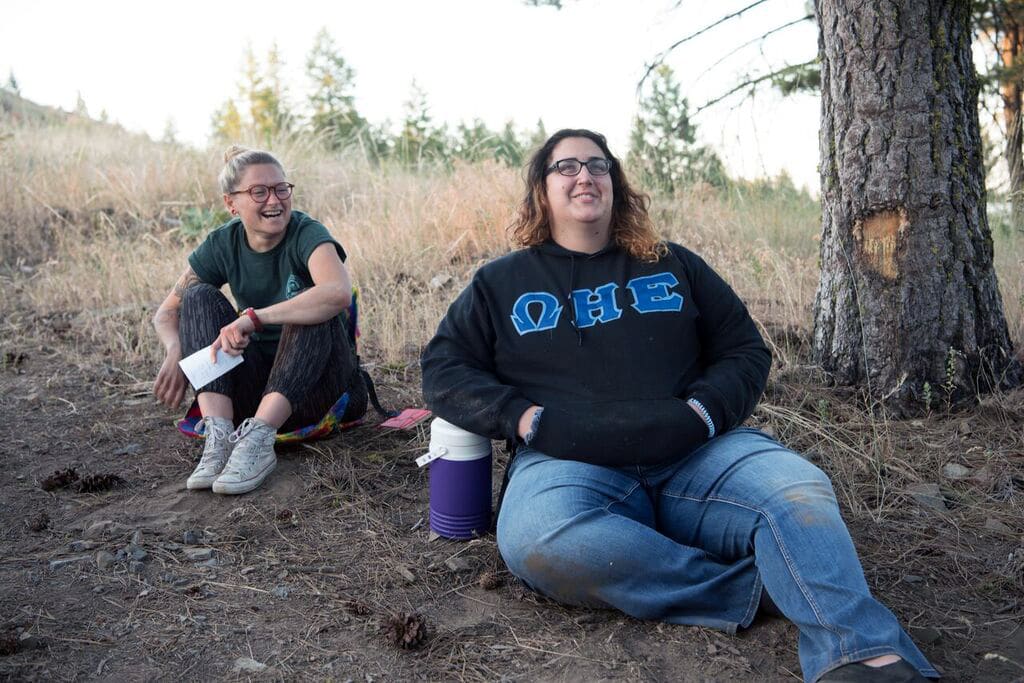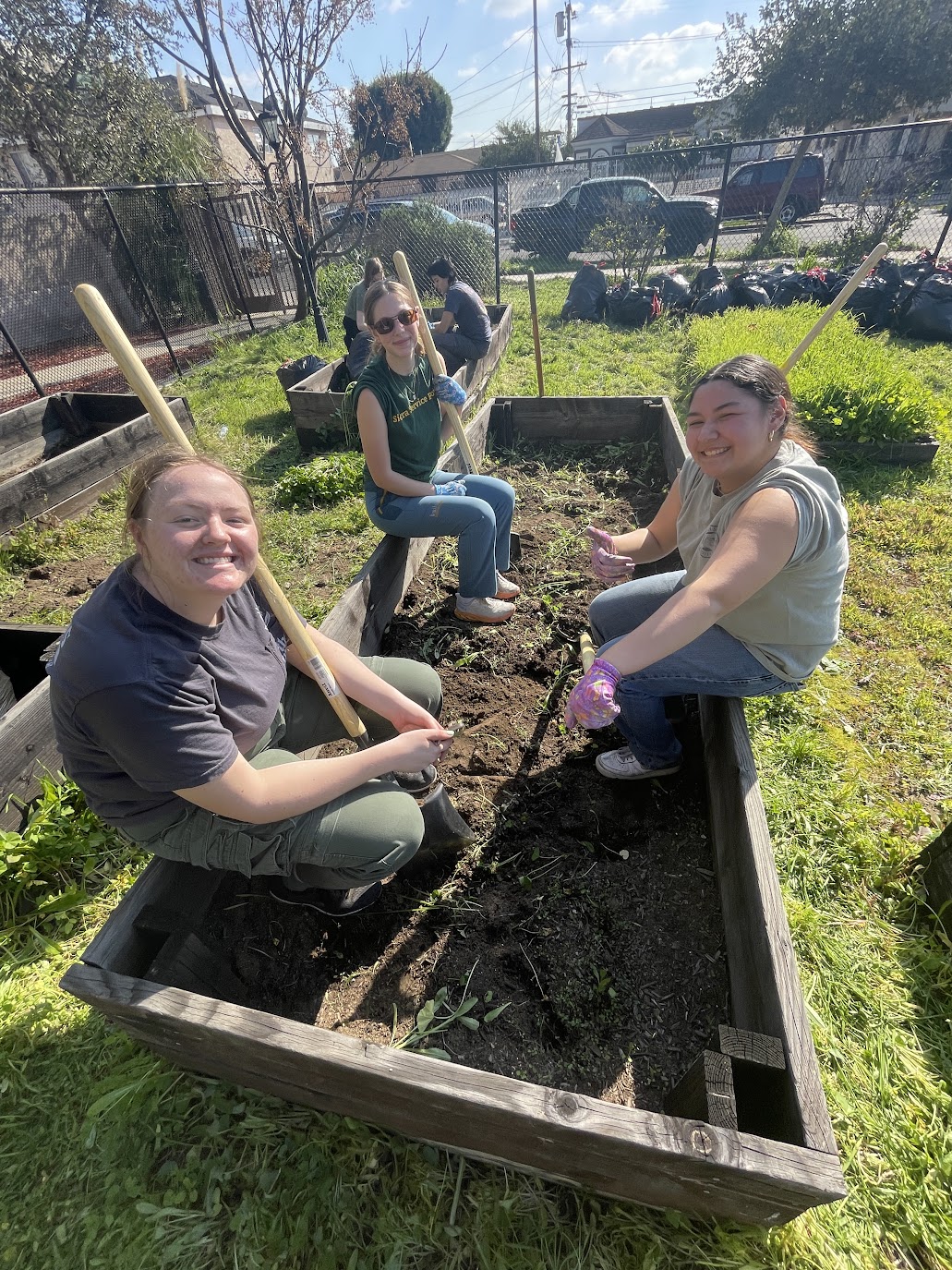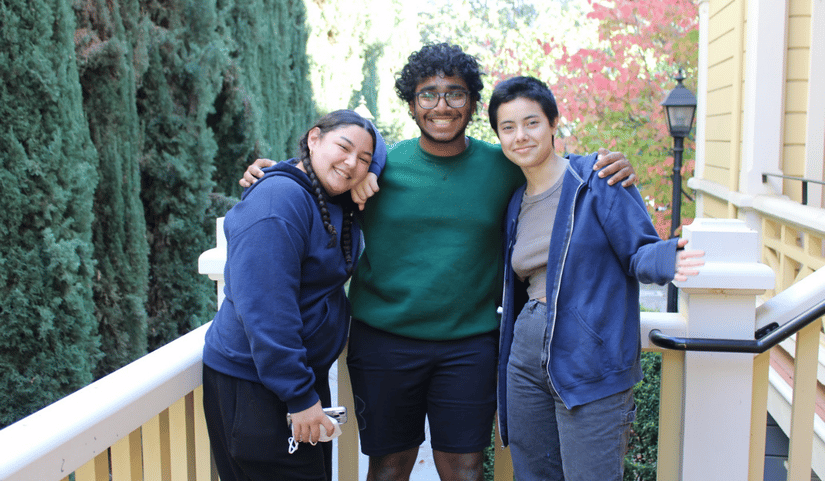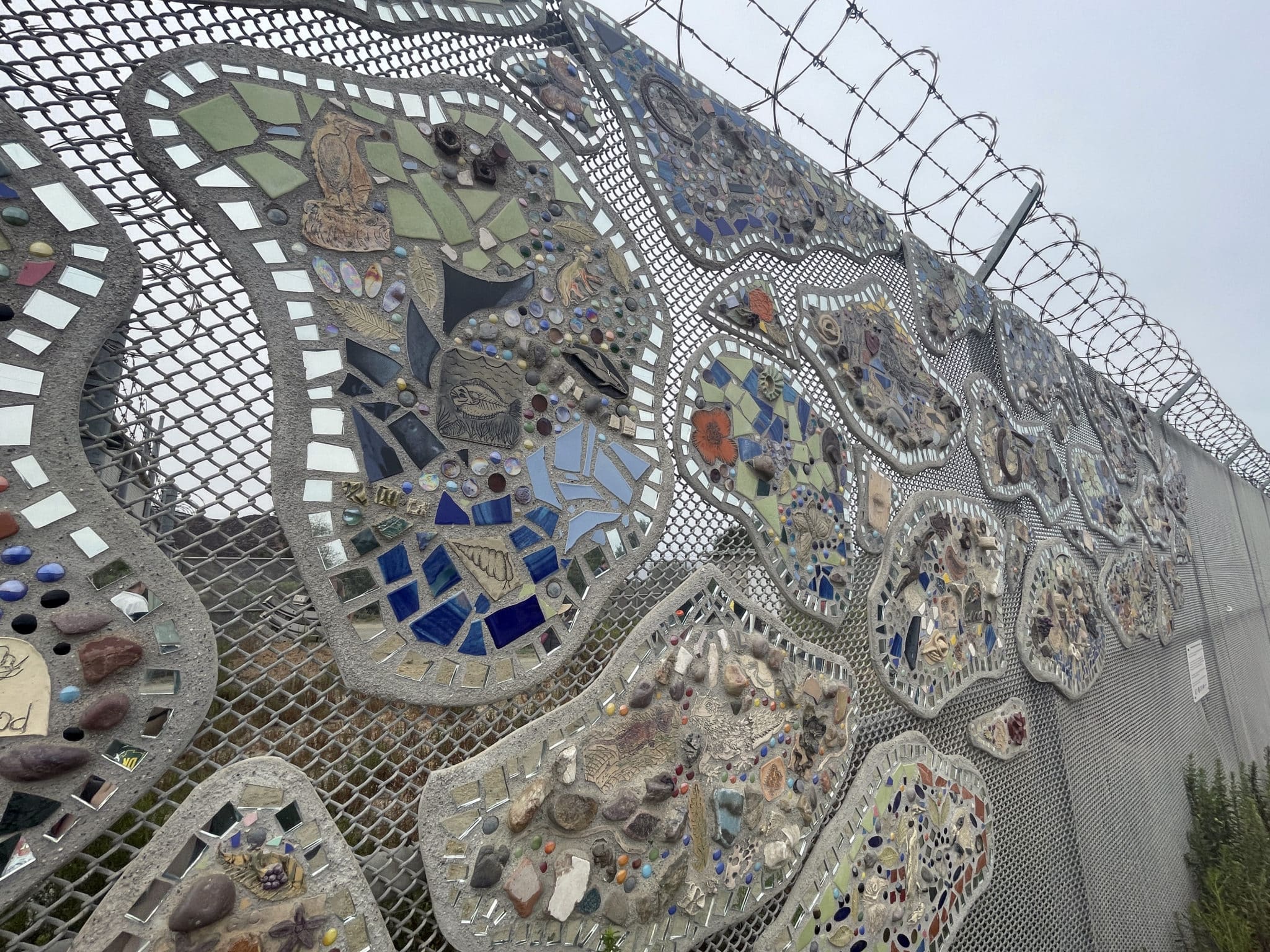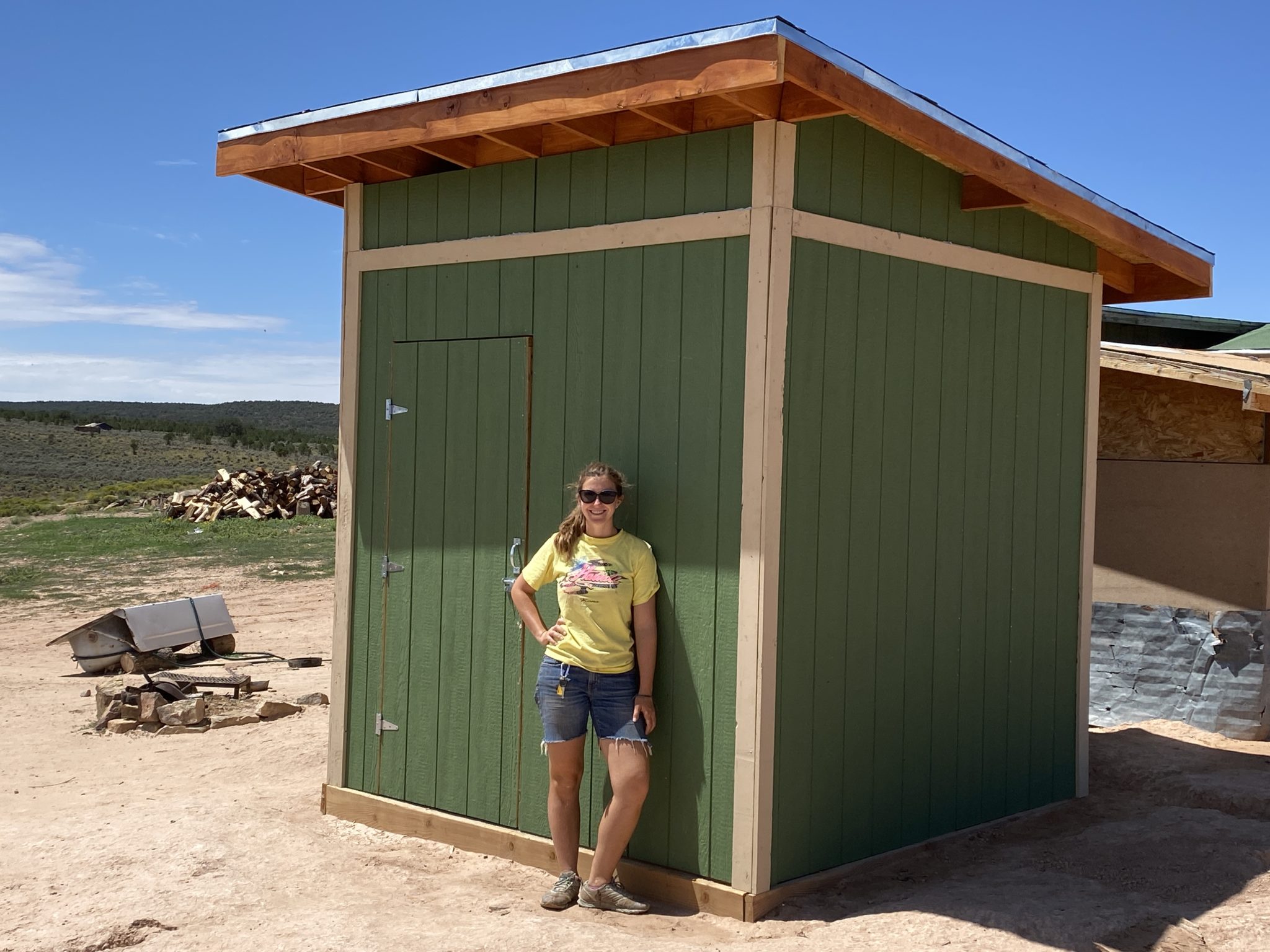By Maggie Guekguezian
During the summer of 2017, I worked as a Food Service Coordinator for Sierra Service Project’s site on the Spokane Indian Reservation in eastern Washington. Unlike the majority of young adults who have staffed for SSP, I never once attended as a youth. Rather, I heard about SSP during the fall of my sophomore year at University of the Pacific, when the department of Religious and Spiritual Life announced they were offering an Alternative Spring Break trip to Portland, Oregon.
Intrigued by this opportunity to spend a week in a city that I at least loved the idea of, I went to an info session and applied soon after. Following a successful interview with two of our group’s three co-leaders – Pacific’s Assistant Chaplain, Laura Steed, and former SSP Site Director, Robbie Frederiksen – I was selected as one of eleven young adult volunteers for the trip. I had no idea of the experience that was in store, nor the impact it would have on my life.
I had no idea of the experience that was in store, nor the impact it would have on my life.
2016: Alternative Spring Break
At 6 AM on March 12th, 2016, two minivans departed University of the Pacific for Portland. I was twenty years old and leaving for my first SSP – about six to nine years later than most folks. It is almost cliché to describe a positive experience as “life-changing,” but I would not hesitate to describe our Alternative Spring Break in 2016 as such!
During our week in Portland, the group from Pacific worked on projects at Dignity Village – a community on the outskirts of the city organized and run by persons who are homeless, providing them with shelter, work in the village, and access to social services – and served with three organizations: St. Andre Bessette, Oregon Food Bank, and Friends of the Carpenter. While working with all four organizations was quite impactful, I found that serving in Dignity Village had the most influence on my life going forward.
The Pacific group spent Sunday through Tuesday working at Dignity Village, where half the group worked on demolition and the other half did carpentry work. I was in the latter group. Mitch, a resident of Dignity Village, taught us how to use a chop saw and jigsaw, frame and caulk windows, and introduced us to the value of measuring twice and cutting once. Our carpentry skills were also reinforced in part by other community members at Dignity Village, with Robbie introducing us. The fact that the people who led us in our project and taught us skills we needed to complete it weren’t always part of our group allowed us to connect with the people we were serving. This reinforced the fact that our group wasn’t made up of heroes coming to a new place to solve problems; we were people helping people – both groups valuable, with a lot to offer one another.
This reinforced the fact that our group wasn’t made up of heroes coming to a new place to solve problems; we were people helping people – both groups valuable, with a lot to offer one another.
Because of the emphasis on the people we were serving, my first SSP was more than making new friends and learning how to use power tools. The fact that between all of that, we interacted with the people whom we served, heard their stories, and learned how to treat people who are traditionally “othered” as human beings, made SSP life-changing for me. SSP was where I learned the value and necessity of relatively small things, like eye contact and eighths of inches. Moreover, this experience rekindled my love of service and outreach, and I was excited to work with my local community in Stockton. I was even more excited for next year’s Alternative Spring Break.
In fact, I had developed a love for SSP that prompted me to ask Robbie about serving on summer staff. Unfortunately, I had no idea that staff teams were already hired by the time March rolled around, and I would have to wait to apply for the next year. Somewhat disappointing as that was, I was committed to applying for staff and continuing my relationship with an organization that had already deeply affected my life over the course of a week.
2017: Alternative Spring Break and Staffing
Although my age for attending my first SSP was far from traditional, my excitement for the next year’s trip was as expected. Naturally, I jumped on applying for Pacific’s 2017 trip, and had our departure date all but engraved in my calendar by the time I was notified I would be part of the group. This anticipation began crystallizing in November, so naturally I had plenty of things to do in the meantime – applying for summer staff, for one.
March 2017 came around, and I had the joy of setting out for Portland with fellow Pacific students for another week of service. The greatest joy of this Alternative Spring Break was in how very different it was from 2016. Pacific had a group that was half the size of our previous one, and our trip coincided with a group from Washington State University, which provided a different dynamic. Additionally, we had a different set of projects and worked with a different organization, requiring me to learn new skills and build new relationships.
To go into further detail, the composition of our groups shifted the focus of the relationships we built with one another. In 2016, our group relationships were rooted in exploring our respective traditions and cultural backgrounds, while the 2017 groups were united in our differing experiences of a common faith. These differences were truly a blessing, and ran parallel to the projects that we worked on. As opposed to my work exclusively on carpentry in 2016, our groups rotated in 2017 between Dignity Village and Bethlehem House of Bread, where we worked on drywall and demolition/construction, respectively.
No two experiences – even at the same site – will be the same.
These contrasts point to a quality of SSP, which is that no two experiences – even at the same site – will be the same. The range of characteristics that made the past two years of SSP impactful for me – in spite of my nominally nontraditional experience – speak to why the service offered is effective and meaningful to a variety of folks, of a variety of ages and backgrounds.
While 2017’s Alternative Spring Break was meaningful its own right, I would not describe it as life-changing – admittedly, asking for two experiences to be so impactful within one year is a lot. However, I would describe working on SSP summer staff as such. In May, I received an email from Megan Walsh regarding an opening on the Spokane staff, and was offered that job the next day, which I accepted with overwhelming excitement. Continuing my trend of a fairly nontraditional relationship with SSP, I was a late hire, and was pretty apprehensive about that. However, my anxiety could not have been more wrong.
In staffing for SSP, I found the best qualities of serving as a young adult volunteer translated to my experience on staff. From our ten-day staff training to the last days of work this summer, I found an emphasis on empathy, cross-boundary understanding, mindfulness, and the value of small actions and details. This provided a framework for the staff to bond with each other and respond to the needs of youth, young adult volunteers, adult counselors, and the communities that we lived and worked in. Furthermore, this allowed me to fall in love with the long hours and hard work of each day of the summer SSP experience. The impact staffing had on my life equipped me with the tools I needed to impact the lives of others.
A Few Last Words
I could talk for ages about everything that SSP has brought to my life –my family and friends can attest to this. Communicating the full range of impact that both attending Alternative Breaks and serving on summer staff had is difficult for me to put into writing. However, I hope that my story and SSP experience can speak to whomever may read this, providing some insight into what SSP offers folks of all ages, and how it can impact someone’s life.
Editor’s Note: Maggie Guekguezian has served two Alternative Breaks with the University of the Pacific and as well as a Food Service Coordinator in Spokane, WA this past summer. This article is featured in SSP’s 2017 Annual Newsletter; read all seven stories written by youth volunteers, summer staff, and community members. Request a hard copy newsletter to be mailed to you.
